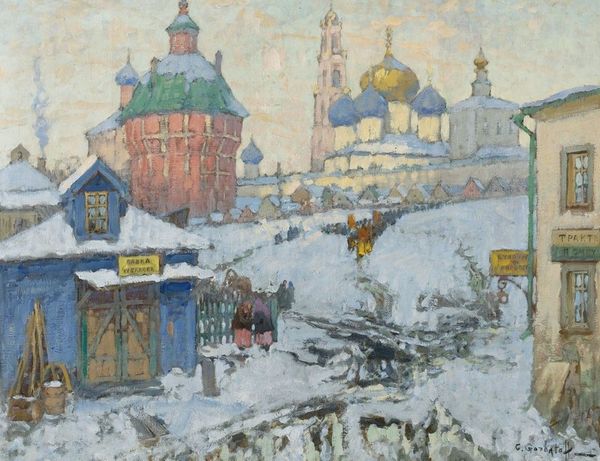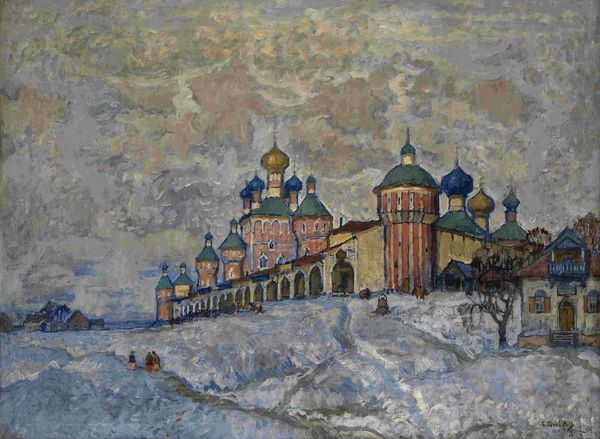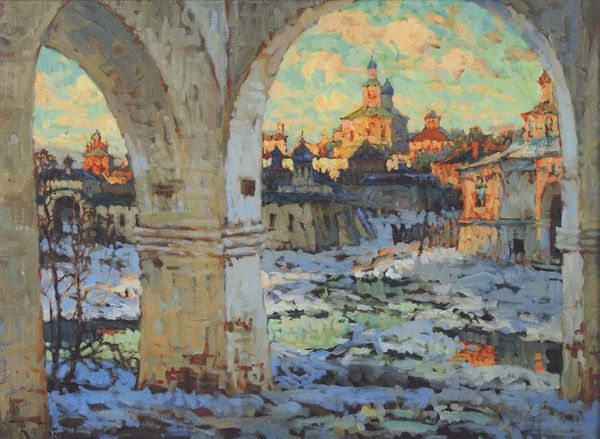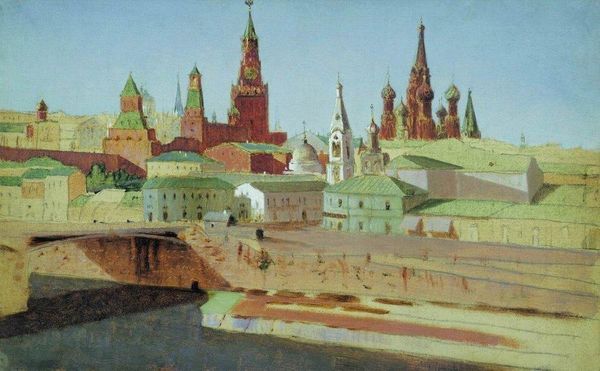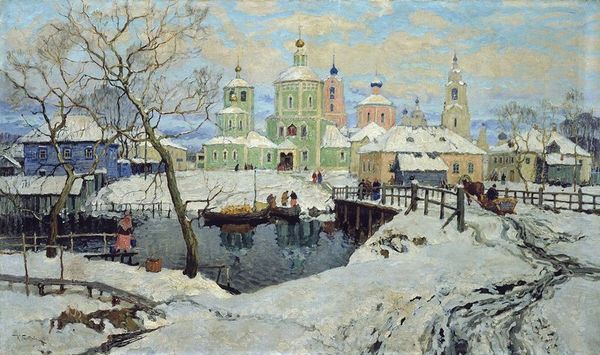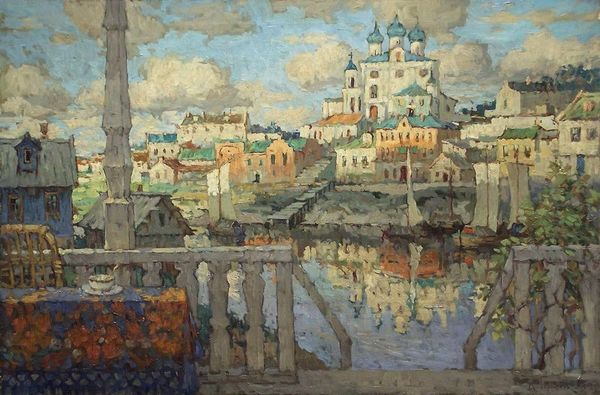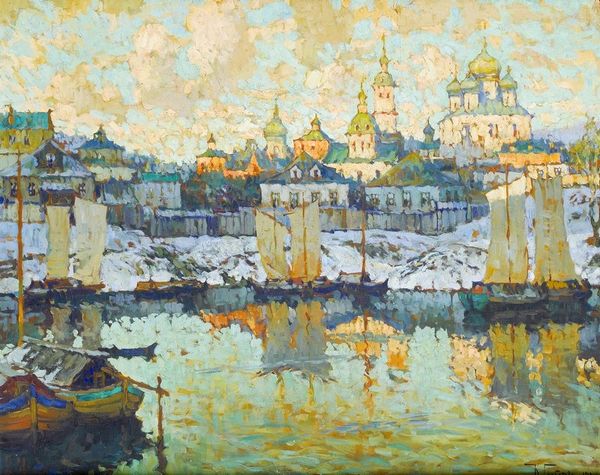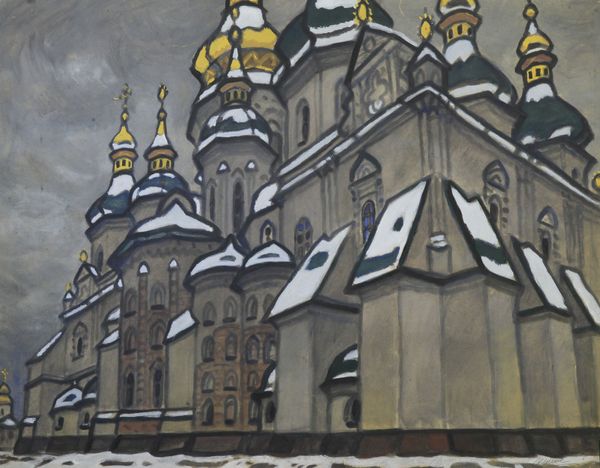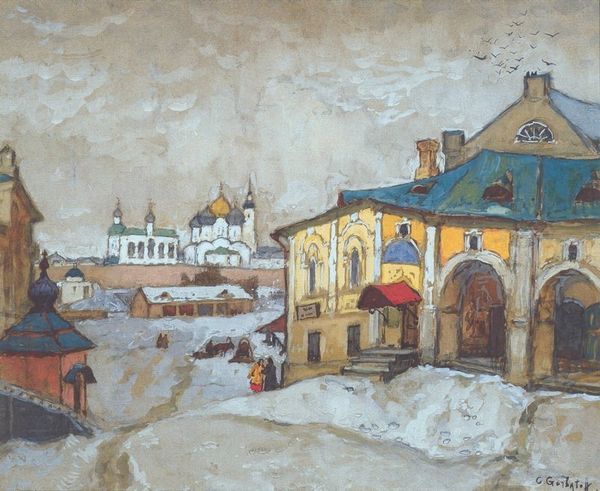
Copyright: Public domain
Konstantin Gorbatov captured the Trinity Monastery in oils on canvas, offering a glimpse into early 20th-century Russia. Born in 1876, Gorbatov's artistic trajectory reflects the tumultuous history of his time, marked by revolution, war, and displacement. His portrayal of the monastery isn't merely a scenic view. It’s a symbol loaded with historical and spiritual significance. The detailed architecture and the serene, snow-covered landscape evoke a sense of timelessness, standing in stark contrast to the societal upheaval happening around him. As the rise of secular ideologies challenged traditional religious institutions, artists like Gorbatov found themselves grappling with questions of identity and belonging. Gorbatov was exiled in 1922 and much of his work was devoted to the architecture of pre-revolutionary Russia. In 1945, Gorbatov died in Berlin. His is buried in the Russian Orthodox Cemetery in Berlin-Tegel. Through his art, Gorbatov offers a poignant reflection on the complexities of cultural heritage, faith, and the search for meaning in a rapidly changing world.
Comments
No comments
Be the first to comment and join the conversation on the ultimate creative platform.
